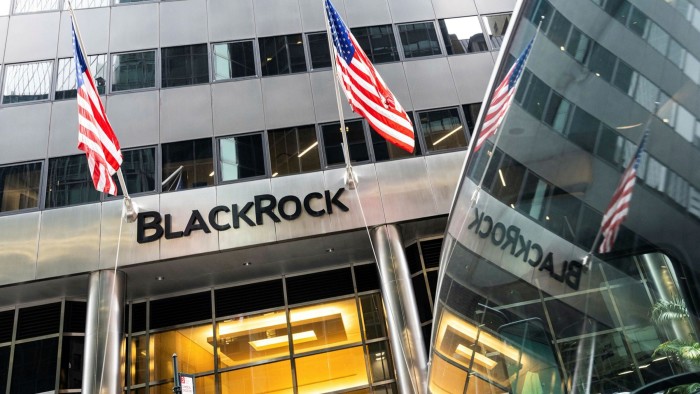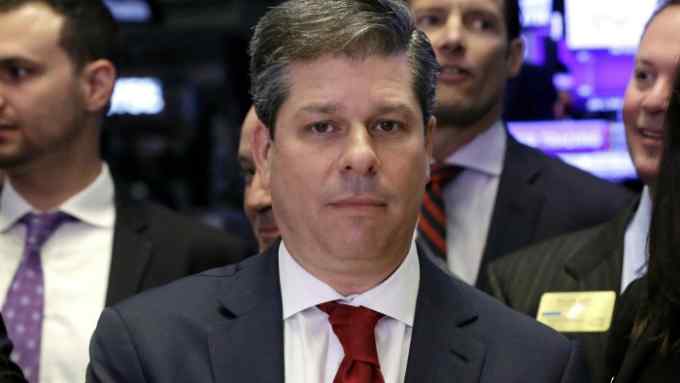Active funds take more of the fixed income ETF pie

Simply sign up to the Exchange traded funds myFT Digest -- delivered directly to your inbox.
Exchange traded funds that invest in fixed income are dominated by three leading providers: BlackRock, Vanguard and State Street. But new regulations and rising demand for actively managed variants in this segment of the market are allowing more players to make their mark.
Fixed-income ETFs had, until recently, been skewed towards products that passively track different tranches of the bond market. At one end of the spectrum stands BlackRock’s LQD fund, which gives investors broad exposure to the US investment-grade corporate bond market. Or, for a more targeted strategy, investors could seek out Vanguard’s short-term inflation-protected bond ETF (VTIP), for example.
However, the adoption of new rules by the US Securities and Exchange Commission in 2019 has made it easier for actively managed ETFs to be launched. Since then, a wave of ETFs, often developed by smaller asset managers, has flooded the market.
Actively managed ETFs allow providers to distinguish themselves by their particular bond-selection strategies. And they also allow their managers to generate bigger profits: the average fee among US actively managed bond ETFs is about 0.5 per cent, according to Morningstar, compared with 0.3 per cent for passive indexed funds.
This may partly explain their proliferation. While fixed-income ETFs are growing at about the same pace as the broader ETF market — roughly 23 per cent over the past five years — actively managed fixed-income funds are growing at nearly twice that pace: 43 per cent, according to Capital Group.
Since the beginning of 2021, 65 of the 105 new fixed-income ETFs that have come to market in the US have been actively managed, according to Morningstar. Net flows into actively managed bond ETFs were also the largest on record in 2021, according to EPFR data.
Passive strategies still dominate, though: in the US, active bond ETFs had $26.5bn of net flows in 2021, while traditional passive ETFs had $161.3bn. Globally, active bond ETFs pulled in a net $32.7bn versus $218.4bn in passive funds.
“What rule 6c-11 [the new regulation adopted by the SEC in 2019] did was really democratise the ability to bring new ETFs to market,” explains Holly Framsted, the head of ETFs at Capital Group, who previously worked at BlackRock.
In February, Capital Group made its first foray into the ETF market, with six actively managed funds, five of which are in equities and one in fixed income.
“There is a large opportunity for us to see greater diversification among the premiere ETF providers, just as there is broad diversification among the premiere asset managers in the mutual fund space today,” she says.
The emergence of new entrants has been helped by the broader adoption of fixed income funds by investors.
“You look more broadly at the ways bond ETFs have taken root in the fixed income ecosystem,” says Ben Johnson, director of global exchange traded fund research at Morningstar. “People trading bond ETFs now sit side by side with their peers that are trading bonds, whereas they used to be pushed off in a corner doing their own thing.”
Part of this shift in the market can be attributed to demographic trends that have increased demand for fixed income instruments — in many developed economies, a growing percentage of people are in or near retirement and are therefore inclined to rebalance their portfolios away from stocks and towards bonds.
In addition to the growth in active bond funds, ETF providers have also expanded their offerings in other areas. Fixed-income ETFs linked to environmental, social and corporate governance concerns have been in high demand for the past few years, and new ESG investment vehicles have continued to proliferate.
Net flows into ESG and socially responsible fixed-income ETFs last year reached $102.1bn — an all-time high, surpassing the previous record of $61.3bn in 2020, according to data from EPFR.
BlackRock remains best known for its large indexed bond ETFs, but it continues to develop products with exposure to more niche segments of the market, including in ESG.
Carolyn Weinberg, global head of product for iShares and indexed investments at BlackRock, says ESG investing “has been a huge growth area”. She says widely used funds, such as LQD and HYG, are “important vehicles of price discovery” in the market — but “high liquidity of 96,000 trades a day is not what we’re looking for from all of our ETFs.”
ESG offerings in the fixed income arena are not limited to passive vehicles, either. Fidelity this year launched an actively managed, high-yield sustainable ETF. “We were looking for a way to differentiate ourselves in the market,” says Benjamin Harrison who, along with Michael Cheng, manages the Fidelity Sustainable High Yield ETF (FSYD).
Russia’s invasion of Ukraine and the consequent market turmoil have only driven up demand for fixed-income assets as investors seek safe ways to stash cash.
Inflows into fixed-income ETFs have increased since the middle of February, after investors pulled $1.2bn from the funds in January — the first month of outflows in bond ETFs since the start of the pandemic, according to EPFR data.
But the problems that had investors concerned in January may create challenges ahead for bond ETFs.
Returns on bonds are particularly sensitive to changes in interest rates — so, as central banks, globally, tighten monetary policy to tamp down inflation, investors could be caught out by higher yields and lower prices.
This article has been amended to reflect a BlackRock reference to funds of “high liquidity of 96,000 trades a day”, not 96,000 an hour as originally quoted

Click here to visit the ETF Hub

Comments